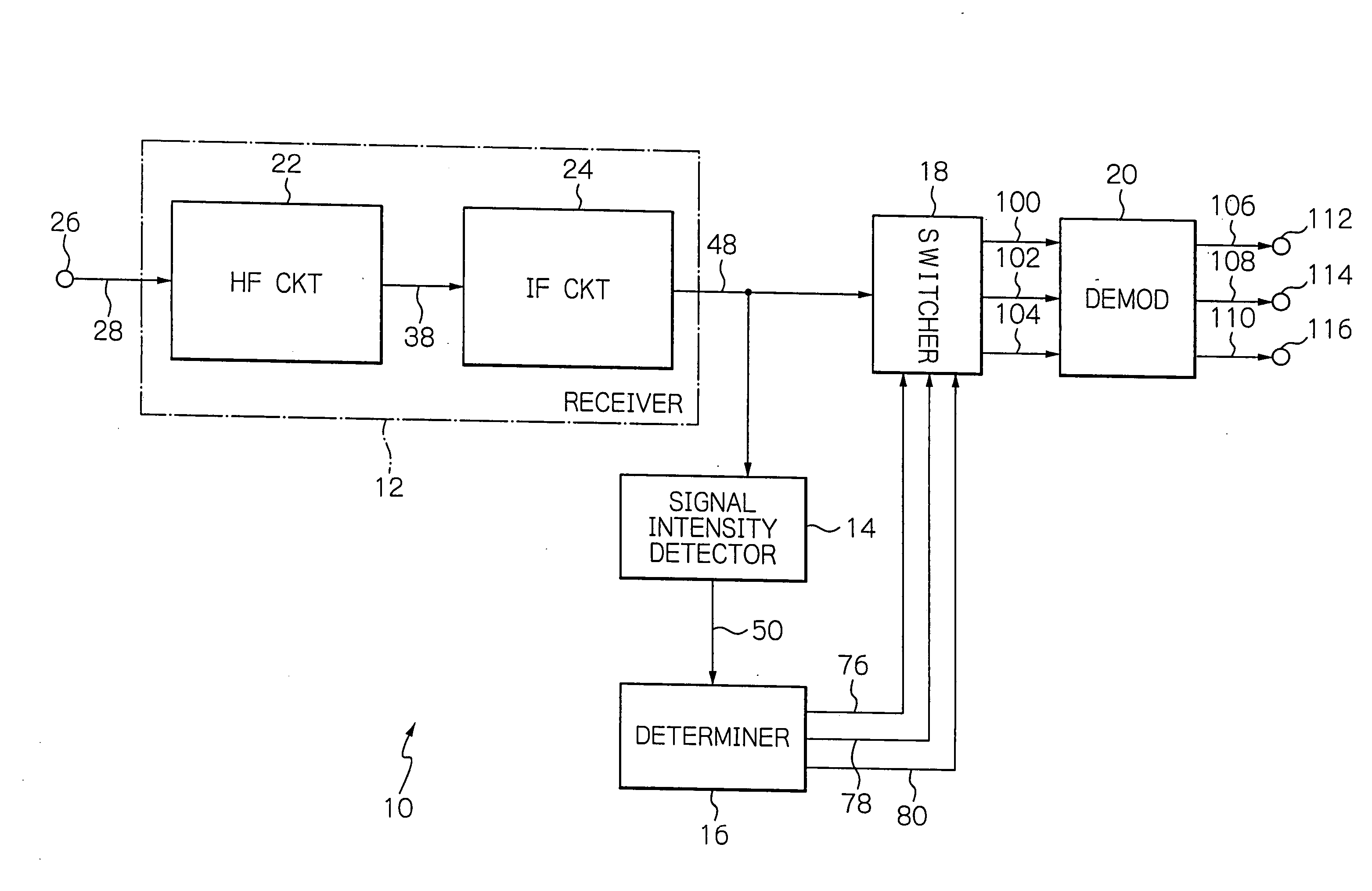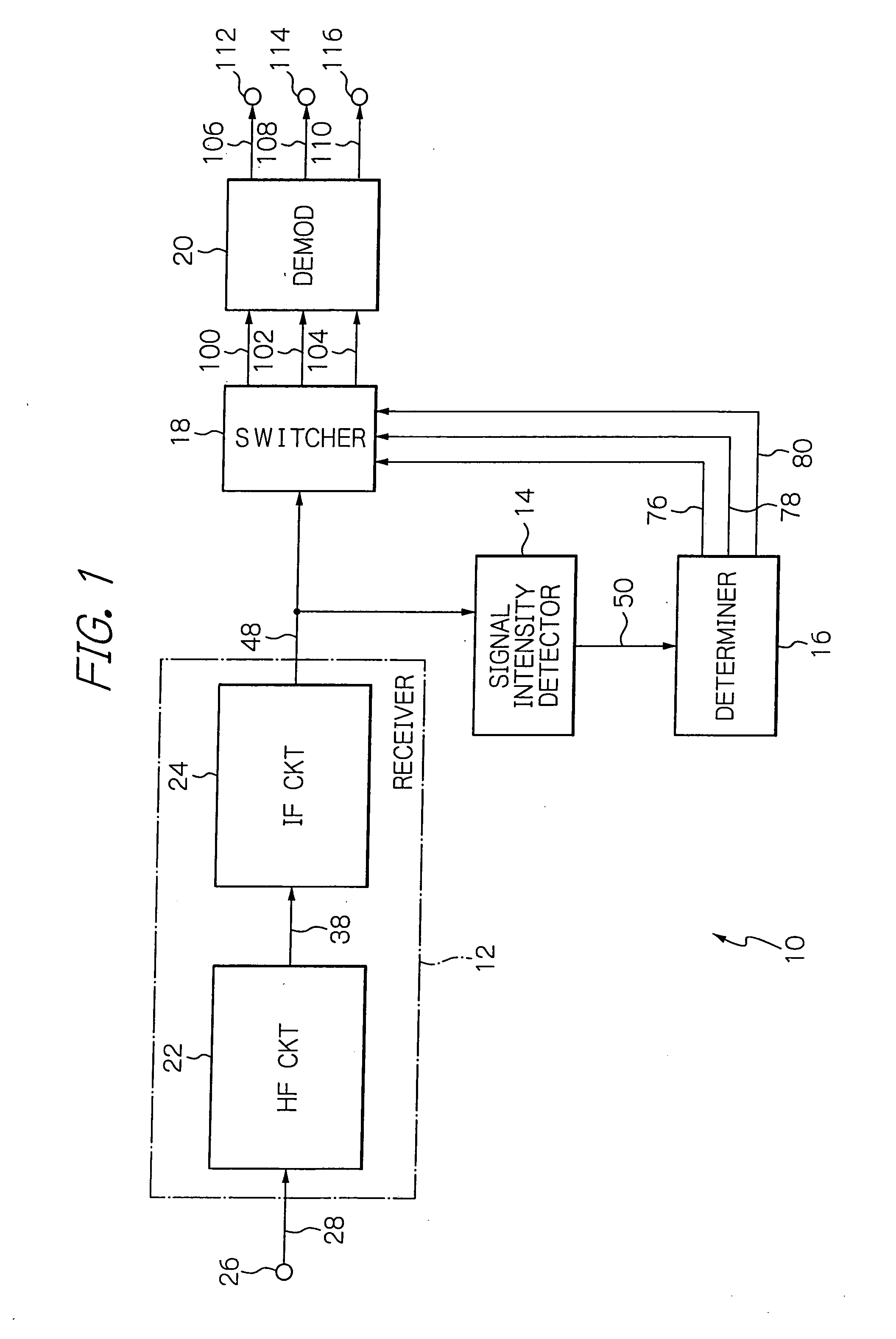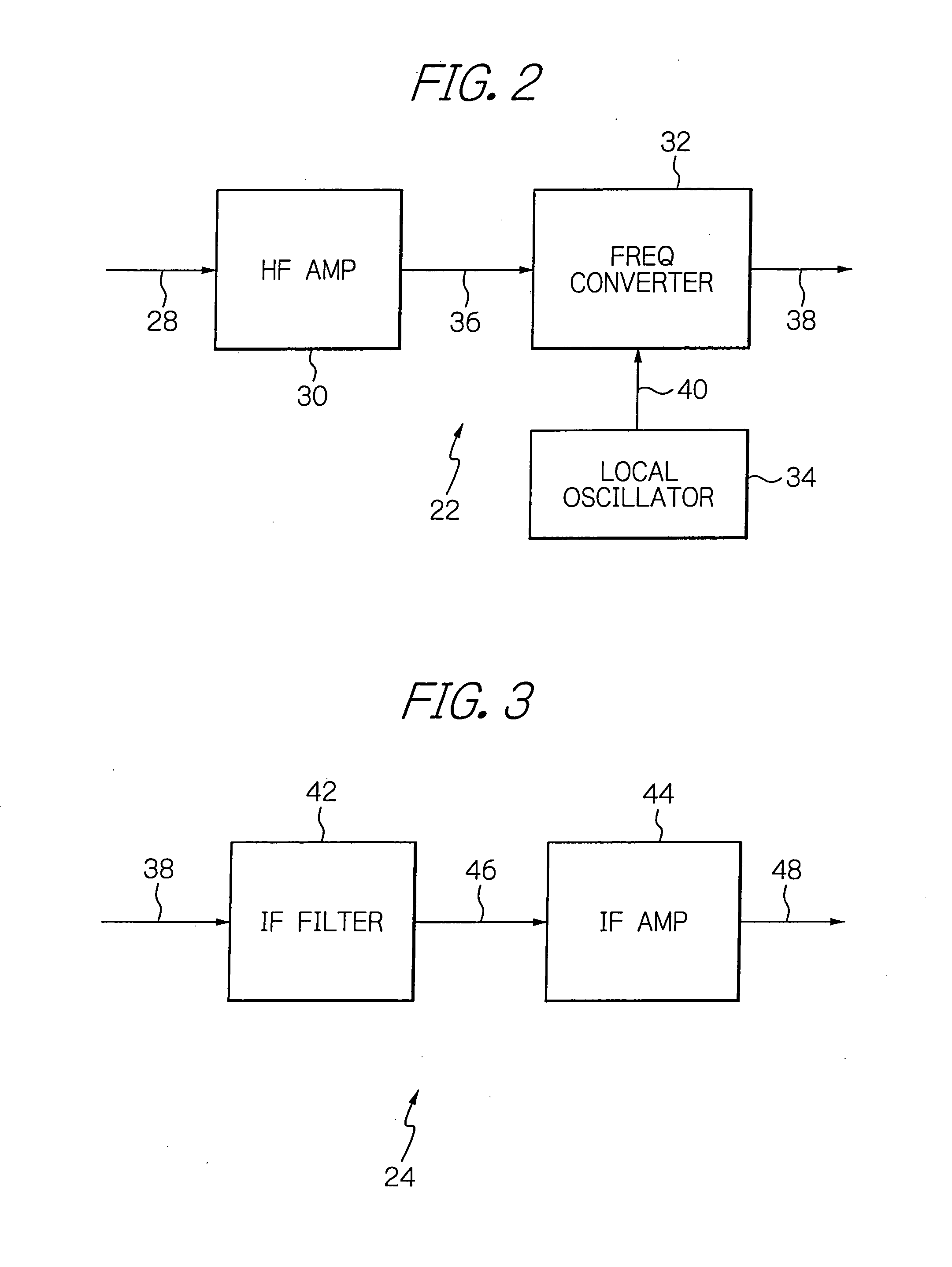Multi-mode receiver circuit for dealing with various modulation systems and signal formats
- Summary
- Abstract
- Description
- Claims
- Application Information
AI Technical Summary
Benefits of technology
Problems solved by technology
Method used
Image
Examples
Embodiment Construction
[0030]Preferred embodiments of a multi-mode receiver circuit according to the present invention will hereinafter be described in detail with reference to the accompanying drawings. Referring initially to FIG. 1, a first preferred embodiment of the multi-mode receiver circuit of the present invention is configured such that a shared receiver 12 receives a signal formed according to any one of various modulation or communication systems to output a received signal 48, a signal intensity detector 14 detects or determines the electric power value, or absolute value of the amplitude, of the received signal 48 to output a detected signal 50, a determiner 16 compares the magnitude of the detected signal 50 with a plurality of threshold voltages, not shown, and generates control signals 76, 78 and 80 to output the latter to a switcher 18, the switcher 18 is operated in response to the control signals 76, 78, and 80 fed to the switcher 18 so that the received signal 48 is responsively fed or...
PUM
 Login to View More
Login to View More Abstract
Description
Claims
Application Information
 Login to View More
Login to View More - R&D
- Intellectual Property
- Life Sciences
- Materials
- Tech Scout
- Unparalleled Data Quality
- Higher Quality Content
- 60% Fewer Hallucinations
Browse by: Latest US Patents, China's latest patents, Technical Efficacy Thesaurus, Application Domain, Technology Topic, Popular Technical Reports.
© 2025 PatSnap. All rights reserved.Legal|Privacy policy|Modern Slavery Act Transparency Statement|Sitemap|About US| Contact US: help@patsnap.com



